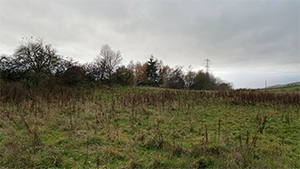|
Remains of Antonine Wall-area Fort Found in Scotland
April 24, 2023
Archaeologists have found remains of a 2nd-Century Roman fort in western Scotland. The small fort was part of an extensive series of protective buildings constructed in conjunction with the building of the Antonine Wall, the northern of two walls the Romans built along the Scottish frontier. The more famous of these two walls was Hadrian's Wall, a much longer and much more sophisticated set of walls and forts stretching he width of northern England, from the River Tyne to the Solway Firth, a distance of 80 Roman miles, or nearly 73 miles. This wall was built in the 120s, on the orders of the emperor Hadrian. Two decades later came the Antonine Wall, built at the behest of a later emperor, Antoninus Pius. This wall, begun in 142, was 99 miles north of Hadrian's Wall. This new wall was 40 Roman miles long, or nearly 43 miles long, and ran from the Firth of Forth to the River Clyde. Nearly two dozen forts were built as well. The recently discovered remains are of a small fort near a school to the northwest of what is today Glasgow. The fort comprised a pair of small wooden buildings, surrounded by a 2-foot-high stone and dirt rampart that was punctuated by two wooden towers in which sat entry/exit gates. A larger, more populated Above ground exist no traces of the fort; however, archaeologists using gradiometry, a high-tech noninvasive method of geographic examination, found the stone foundations of the fort underground, near tiny traces of what is left of the defensive ditch. The fort is representative of the remains of the Antonine Wall, which are indeed sparse, much moreso than what is left of Hadrian's Wall. Roman forces originally planned to subjugate all of Scotland, which they called Caledonia, but eventually abandoned those plans and built the pair of wall-and-fort systems as a means of protecting existing Roman occupation in England. |
Social Studies for Kids |
Social Studies for Kids
copyright 2002–2024
David White




 fort once stood a mile to the east, at Duntocher.
fort once stood a mile to the east, at Duntocher.
